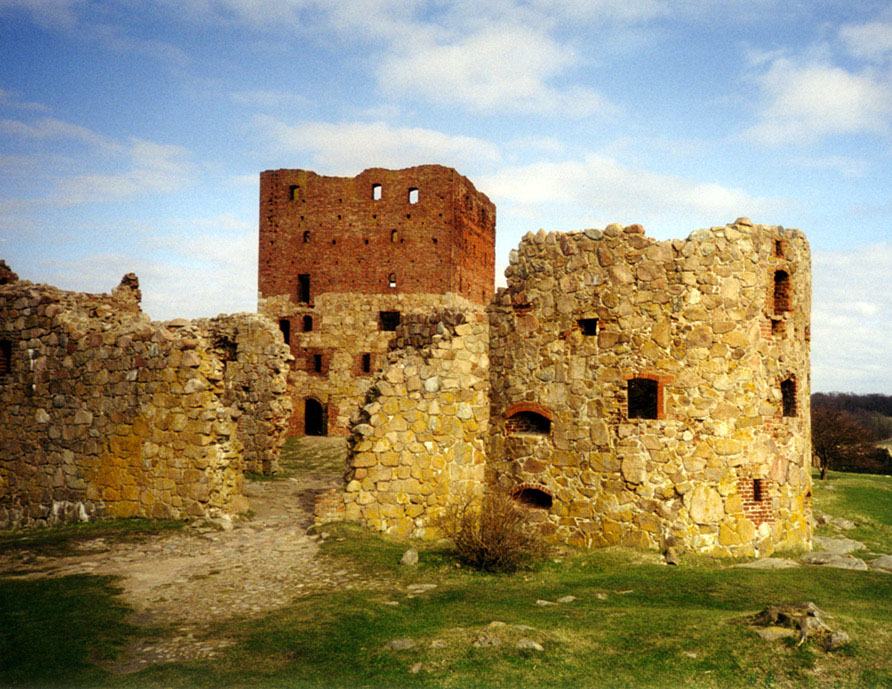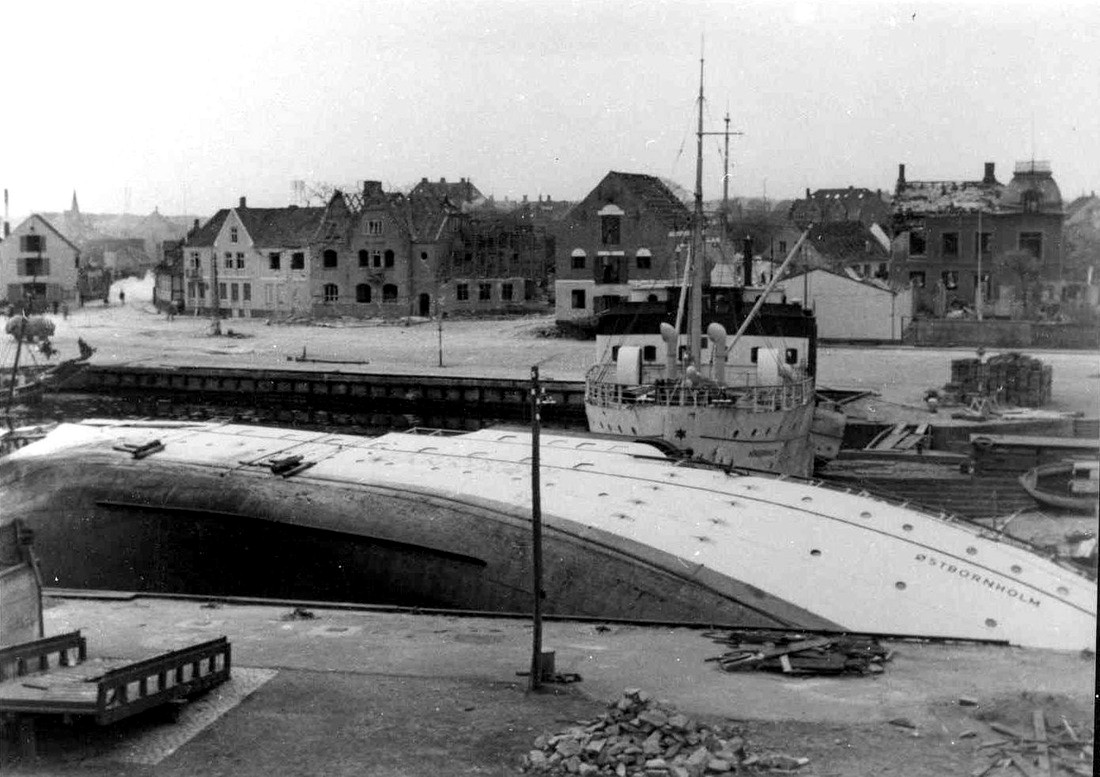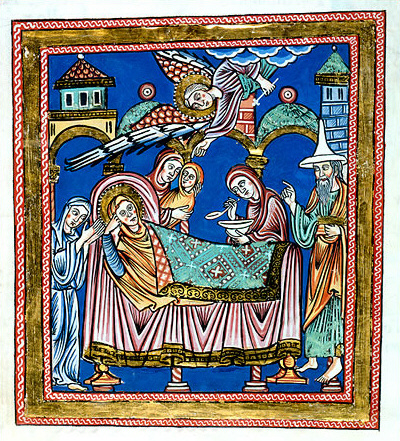|
Balka
Balka, also Balke, is a village and seaside resort midway between Nexø and Snogebæk on the southwest coast of the Danish island of Bornholm. As of 2022, it has a population of 200. It is best known for its wide beach with fine white sand. Etymology The current name "Balka" ending with an A is incorrect as the locality was originally called "Balke" as can be seen on Bernhard Frantz Hammer's map from 1746. The original name stems from the sea sweeping up banks of sandstone fragments known as "balke". "Balk" comes from the Old Norse "balkr" and is used in modern Danish to denote a boundary between two fields. The sandstone banks known as "Balke Udmark" have now been largely destroyed by quarrying and construction."Balke Strand" ''På 367 ture i Bornholms natur''. Retrieved 9 November 2012. History The community grew up ...[...More Info...] [...Related Items...] OR: [Wikipedia] [Google] [Baidu] |
Snogebæk
Snogebæk is a fishing village and tourist resort in the south-east of the Danish island of Bornholm some 5 km south of Nexø"Snogebæk på Bornholm" ''Bornholm.net''. . Retrieved 19 June 2012 with a population of 700 (1 January 2022). It shares a fine sandy beach with neighbouring . History The first written references to Snogebæk date from 1555 but it is thought the area has been inhabited since the . Originally it probably consisted of a few dispersed smallholdings providing a living from farming and fishing. The first harbour was built on the c ...[...More Info...] [...Related Items...] OR: [Wikipedia] [Google] [Baidu] |
Bornholm
Bornholm () is a Danish island in the Baltic Sea, to the east of the rest of Denmark, south of Sweden, northeast of Germany and north of Poland. Strategically located, Bornholm has been fought over for centuries. It has usually been ruled by Denmark, but also by Sweden and by Lübeck. The ruin of Hammershus, at the northwestern tip of the island, is the largest medieval fortress in northern Europe, testament to the importance of its location. Bornholm and Ertholmene comprise the last remaining Danish territory in Skåneland east of Øresund, having been surrendered to Sweden in 1658, but regained by Denmark in 1660 after a local revolt. The island is known as ("sunshine island") because of its weather and ("rock island") because of its geology, which consists of granite, except along the southern coast. The heat from the summer is stored in the rock formations and the weather is quite warm until October. As a result of the climate, a local variety of the common fig, k ... [...More Info...] [...Related Items...] OR: [Wikipedia] [Google] [Baidu] |
Iron Age
The Iron Age is the final epoch of the three-age division of the prehistory and protohistory of humanity. It was preceded by the Stone Age (Paleolithic, Mesolithic, Neolithic) and the Bronze Age (Chalcolithic). The concept has been mostly applied to Iron Age Europe and the Ancient Near East, but also, by analogy, to other parts of the Old World. The duration of the Iron Age varies depending on the region under consideration. It is defined by archaeological convention. The "Iron Age" begins locally when the production of iron or steel has advanced to the point where iron tools and weapons replace their bronze equivalents in common use. In the Ancient Near East, this transition took place in the wake of the Bronze Age collapse, in the 12th century BC. The technology soon spread throughout the Mediterranean Basin region and to South Asia ( Iron Age in India) between the 12th and 11th century BC. Its further spread to Central Asia, Eastern Europe, and Central Europe is somewhat ... [...More Info...] [...Related Items...] OR: [Wikipedia] [Google] [Baidu] |
Nexø
Nexø, sometimes spelled Neksø ( sv, Nexö), is a town on the east coast of the Baltic island of Bornholm, Denmark. With a population of 3,668 (as of 1 January 2022), it is the second largest town, as well as the largest fishing port on the island. Fishing was previously the mainstay of the town's economy. Nexø is also the site of a distillery (Bornholmske Spiritfabrik ApS) and a mustard factory (Bornholmersennep ApS). The town is also a port of call for the passenger ferries linking Bornholm with Kołobrzeg in Poland. Dueodde, the largest beach on Bornholm, is located south of Nexø, in the southeastern corner of the island. Etymology "Nexø" is possibly a combination of the Old Norse elements "nøkke", meaning Nix or water spirit, and "sæ" (sea). It was first documented in 1346 as ''Nexe''. [...More Info...] [...Related Items...] OR: [Wikipedia] [Google] [Baidu] |
Joachim Fagerlund
Joachim (; ''Yəhōyāqīm'', "he whom Yahweh has set up"; ; ) was, according to Christian tradition, the husband of Saint Anne and the father of Mary, the mother of Jesus. The story of Joachim and Anne first appears in the Biblical apocryphal Gospel of James. His feast day is 26 July, a date shared with Saint Anne. In Christian tradition The story of Joachim, his wife Anne (or Anna), and the miraculous birth of their child Mary, the mother of Jesus, was told for the first time in the 2nd-century apocryphal infancy-gospel the Gospel of James (also called Protoevangelium of James). Joachim was a rich and pious man, who regularly gave to the poor. However, Charles Souvay, writing in the ''Catholic Encyclopedia'', says that the idea that Joachim possessed large herds and flocks is doubtful. At the temple, Joachim's sacrifice was rejected, as the couple's childlessness was interpreted as a sign of divine displeasure. Joachim consequently withdrew to the desert, where he fasted ... [...More Info...] [...Related Items...] OR: [Wikipedia] [Google] [Baidu] |
Eurasian Penduline Tit
The Eurasian penduline tit or European penduline tit (''Remiz pendulinus'') is a passerine bird of the genus '' Remiz''. It is relatively widespread throughout the western Palearctic. It is migratory in the northern part of its range but resident in the southern part. The breeding range in Western Europe experienced an expansion during the 1980s and 1990s. This was accompanied by an expansion of the species’ winter range and reached as far south as northern Morocco. It builds an elaborate hanging nest, formerly used in Central Europe as children's slippers. Taxonomy The Eurasian penduline tit was formally described by the Swedish naturalist Carl Linnaeus in 1758 in the tenth edition of his ''Systema Naturae'' under the binomial name ''Motacilla pedulinus''. It is now placed in the genus '' Remiz'' that was introduced in 1819 by the Polish zoologist Feliks Paweł Jarocki. The genus name ''Remiz'' is the Polish word for the Eurasian penduline tit. The specific epithet is from ... [...More Info...] [...Related Items...] OR: [Wikipedia] [Google] [Baidu] |
Common Tern
The common tern (''Sterna hirundo'') is a seabird in the family Laridae. This bird has a circumpolar distribution, its four subspecies breeding in temperate and subarctic regions of Europe, Asia and North America. It is strongly migratory, wintering in coastal tropical and subtropical regions. Breeding adults have light grey upperparts, white to very light grey underparts, a black cap, orange-red legs, and a narrow pointed bill. Depending on the subspecies, the bill may be mostly red with a black tip or all black. There are several similar species, including the partly sympatric Arctic tern, which can be separated on plumage details, leg and bill colour, or vocalisations. Breeding in a wider range of habitats than any of its relatives, the common tern nests on any flat, poorly vegetated surface close to water, including beaches and islands, and it readily adapts to artificial substrates such as floating rafts. The nest may be a bare scrape in sand or gravel, but it ... [...More Info...] [...Related Items...] OR: [Wikipedia] [Google] [Baidu] |
Anacamptis Morio
''Anacamptis morio'', the green-winged orchid or green-veined orchid (synonym ''Orchis morio''), is a flowering plant of the orchid family, Orchidaceae. It usually has purple flowers, and is found in Europe and the Middle East. Description It flowers from late April to June in the British Isles, and as early as February in other countries, such as France. The inflorescence is of various colours, mainly purple but ranging from white, through pink, to deep purple. From 5 to 25 helmet-shaped flowers grow in a loose, linear bunch at the top of the single stalk. A pair of lateral sepals with prominent green, occasionally purple veins extend laterally like "wings", giving the orchid its name. The broad, three lobed, lower petal is pale in the center with dark spots. Leaves are lanceolate, or sometimes ovate, and grow in a rosette around the base of the plan, with some thinner leaves clasping the stem and sheathing almost up to the flowers. Leaves are green and unspotted. Plants grow to ... [...More Info...] [...Related Items...] OR: [Wikipedia] [Google] [Baidu] |
Summer House
A summer house or summerhouse has traditionally referred to a building or shelter used for relaxation in warm weather. This would often take the form of a small, roofed building on the grounds of a larger one, but could also be built in a garden or park, often designed to provide cool shady places of relaxation or retreat from the summer heat. It can also refer to a second residence, usually located in the country, that provides a cool and relaxing home to live in during the summer, such as a vacation property. In the Nordic countries Especially in the Nordic countries, sommerhus ( Danish), sommarstuga (Swedish), hytte ( Norwegian), sumarbústaður or sumarhús ( Icelandic) or kesämökki ( Finnish) is a summer residence (as a second home). It can be a larger dwelling like a cottage rather than a simple shelter. ''Sommarhus'' (in sv, sommarstuga or ''lantställe''), in Norwegian ''hytte'', is a popular holiday home or summer cottage, often near the sea or in an attra ... [...More Info...] [...Related Items...] OR: [Wikipedia] [Google] [Baidu] |
Statistics Denmark
Statistics Denmark ( da, Danmarks Statistik) is a Danish governmental organization under the Ministry of the Interior and Housing and which reports to the Minister of Economic and Internal Affairs. The organization is responsible for creating statistics on the Danish society, for example employment statistics, trade balance, and demographics. Statistics Denmark makes large use of public registers in the statistical production. Population censuses have been produced entirely from registers since 1981. StatBank is a large statistical database maintained by the central authority of statistics in Denmark. Online distribution of statistics has been a part of the dissemination strategy in Denmark since 1985. It is updated every day at 9.00 am (CET) and contains all new statistics. The statistics can be presented as cross-tables, diagrams or maps. The output can be transferred to other programs for further compilation. There is also a Danish version. History Statistics in Denmar ... [...More Info...] [...Related Items...] OR: [Wikipedia] [Google] [Baidu] |
Old Norse
Old Norse, Old Nordic, or Old Scandinavian, is a stage of development of North Germanic languages, North Germanic dialects before their final divergence into separate Nordic languages. Old Norse was spoken by inhabitants of Scandinavia and their Viking expansion, overseas settlements and chronologically coincides with the Viking Age, the Christianization of Scandinavia and the consolidation of Scandinavian kingdoms from about the 7th to the 15th centuries. The Proto-Norse language developed into Old Norse by the 8th century, and Old Norse began to develop into the modern North Germanic languages in the mid-to-late 14th century, ending the language phase known as Old Norse. These dates, however, are not absolute, since written Old Norse is found well into the 15th century. Old Norse was divided into three dialects: Old West Norse, ''Old West Norse'' or ''Old West Nordic'' (often referred to as ''Old Norse''), Old East Norse, ''Old East Norse'' or ''Old East Nordic'', and ''Ol ... [...More Info...] [...Related Items...] OR: [Wikipedia] [Google] [Baidu] |
Denmark
) , song = ( en, "King Christian stood by the lofty mast") , song_type = National and royal anthem , image_map = EU-Denmark.svg , map_caption = , subdivision_type = Sovereign state , subdivision_name = Kingdom of Denmark , established_title = Consolidation , established_date = 8th century , established_title2 = Christianization , established_date2 = 965 , established_title3 = , established_date3 = 5 June 1849 , established_title4 = Faroese home rule , established_date4 = 24 March 1948 , established_title5 = EEC accession , established_date5 = 1 January 1973 , established_title6 = Greenlandic home rule , established_date6 = 1 May 1979 , official_languages = Danish , languages_type = Regional languages , languages_sub = yes , languages = GermanGerman is recognised as a protected minority language in the South Jutland area of Denmark. , demonym = , capital = Copenhagen , largest_city = capital , coordinates = , ethnic_groups = , ethnic_gro ... [...More Info...] [...Related Items...] OR: [Wikipedia] [Google] [Baidu] |








